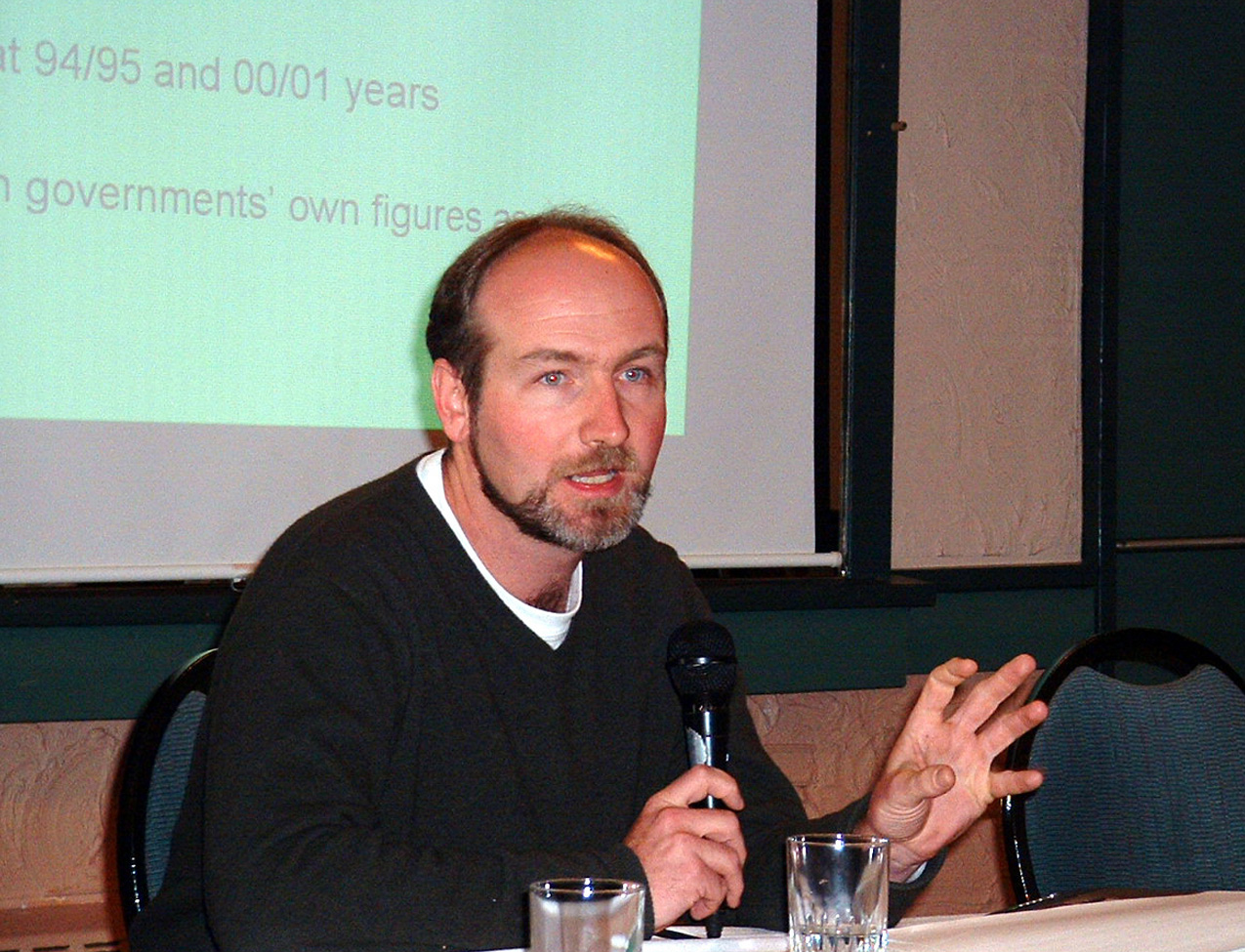On October 29, MiningWatch Canada and the Pembina Institute for Appropriate Development launched our long-awaited report on public subsidies to the mining industry in Canada. The full report, summary and an abridged version in French (covering Québec) are available for download as PDF files under "Canada's mining industry strikes gold - in the taxpayers' wallet: Federal taxpayers spend $13,000 for each mining job".
The report has been a project of ours for almost two years. In 2001, we worked with a group of ten advisors — ecological accountants, labour researchers, and economists — to scope the issues and develop the concept. In early 2001 the contract for the work was awarded to Pembina. Lead researcher Mark Winfield, with Amy Taylor, François Meloche and Catherine Coumans, undertook the meticulous digging in government files for data. Funding came from a number of foundations and partner organizations which felt they needed the information for their own work.
Scoping the issues was a challenging task. Most of the costs of mining are environmental and social and do not show up on the ledgers of companies or governments. Most are not measurable in dollars, although the estimated remediation costs for closed mines provide a proxy of sorts for these costs. The Advisory Group decided to first look at those costs and benefits that could be clearly quantified in dollars and to use only governments' terms and accounts for the analysis. We studied British Columbia, Ontario, the Yukon, Québec and the federal government in two fiscal years: 1994-5 and 2000-1.
Mining Watch will be taking the study on the road in the next year, and carrying out workshops with interested communities, workers and organizations. If you want to book a workshop, please contact Mel at our office.
Some of the results:
- Fewer and fewer people are employed in mining in Canada: 29,248 in 2000-1
- The public subsidy per job in 2000-1 was $4,054 to the Yukon, $15,405 in Québec, $6,848 in Ontario and $4,591 in BC, plus $13,048 from the federal government.
- The return in terms of GDP and tax royalties from mining was down in all jurisdictions studied except Québec, and, in Québec, royalties amounted to less than a quarter of the subsidies.
- Ontario, the Yukon and Québec get less back in mining royalties than they spend on subsidies
- The public liability for abandoned/orphaned mines (using government figures) was $639.5 million federally (NWT and Yukon), $300-450 million in Ontario, in excess of $85 million in BC, and $75-350 million in Québec
- Québec paid out the most in support of the industry: a whopping $107.7 million in 2000-2001, and received $26 million in royalties.
The report did not include a study of corporate taxation in general, since the Technical Committee on Business Taxation undertook this study in 1998 for the federal Department of Finance. That study found that the federal effective corporate tax rate in 1997 was only 6% for mining, as opposed to 8% for forestry, 16% for oil and gas and 26% for public utilities.
The study also did not estimate the cost of the subsidies provided by infrastructures support such as roads, reduced hydro costs and developments, free access to water nor the actual rental values of mineral rights.
Recommendations include: appropriate funding for industrial adjustment for mining-affected communities, an end to subsidies for "greenfield" exploration, and sectoral accounting practices by governments.
